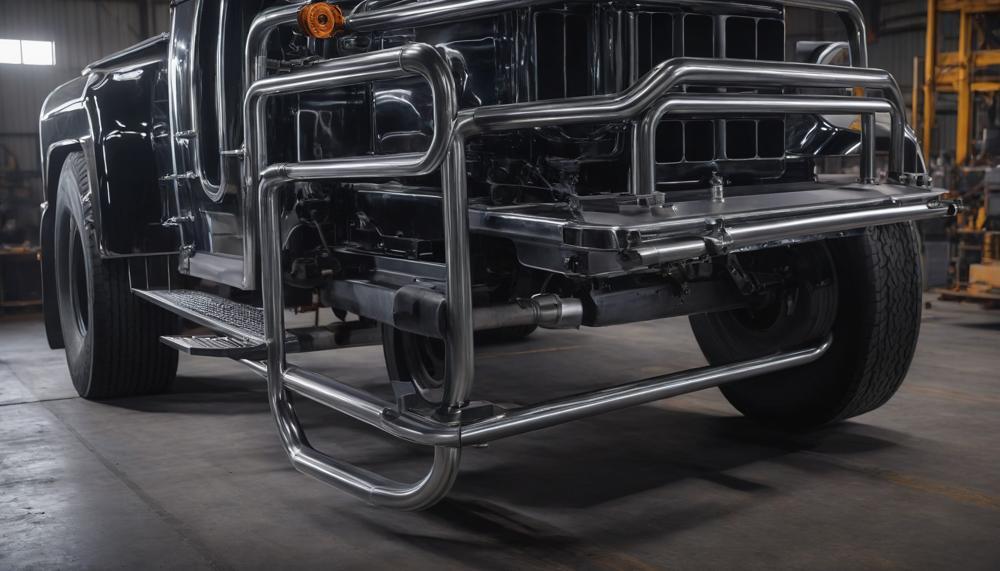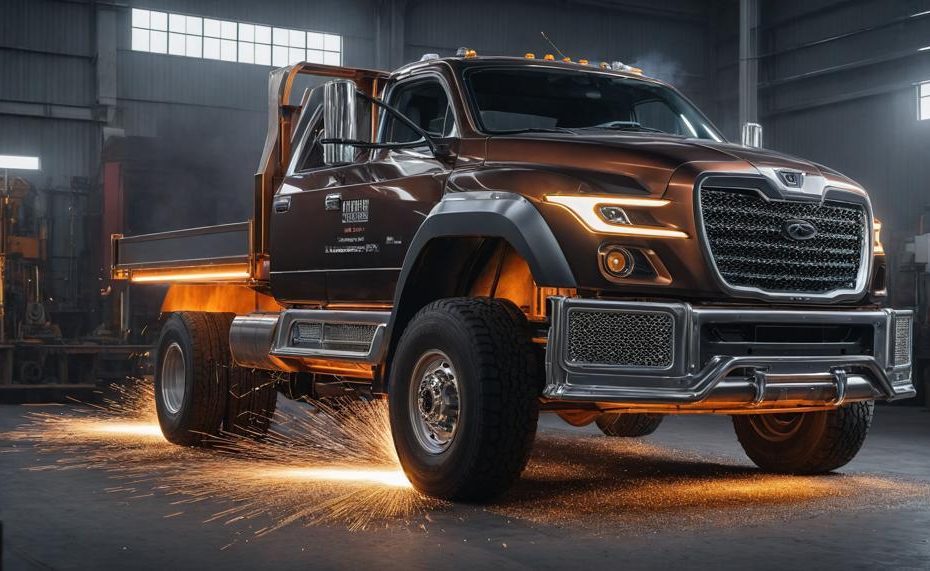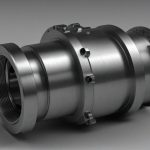When it comes to maintaining and modifying vehicles, truck owners often find themselves at a crossroads between innovation and regulation. Among the various modifications, the topic of welding a truck frame sparks considerable debate, intertwining safety concerns, legal standards, and personal customization desires.
This blog post delves into the intricate web of rules and guidelines surrounding the practice of welding truck frames, aiming to shed light on what’s permissible and what might land you in hot water.
Key insights include:
- Safety First: Understanding how welding can affect the structural integrity of your truck and the paramount importance of maintaining safety standards.
- Navigating Regulations: A look into the varied legal landscape, highlighting how laws differ from one region to another and the importance of familiarizing yourself with local ordinances.
- Professional Standards: The significance of relying on certified professionals for welding tasks, ensuring that modifications meet industry standards and don’t compromise the vehicle’s safety.
Join us as we explore the ins and outs of welding truck frames, providing you with the knowledge you need to make informed decisions about your vehicle’s modifications. Whether you’re a DIY enthusiast or a professional in the automotive field, understanding the legal and safety implications of such modifications is crucial.
Contents
What’s a Cut and Shut?
A Cut and Shut, in the realm of truck frames, is a welding manoeuvre where two or more segments of metal—often from different frames—are seamlessly fused to extend or augment the chassis. This method isn’t just about sticking pieces together; it’s an art that demands precision, understanding, and respect for the integrity of the vehicle.
| Definition | Welding two or more truck frames together to create a single, extended or modified chassis. |
| Origin | UK, 1950s; evolved from an illegal practice to a recognised automotive welding technique. |
| Legal Status | Legal with adherence to safety regulations and certification by a qualified engineer in the US. |
| Significance | Crucial for ensuring the safety, structural integrity, and legal compliance of modified truck frames. |
| Recommended Welding | MIG welding, for its efficacy with thicker materials and adaptability. |
Grasping the essence of a Cut and Shut is paramount for anyone venturing into the world of automotive modifications, especially with truck frames. It’s not merely about the alteration but ensuring the vehicle remains a safe bearer of loads and a reliable traveller on roads.
With regulations varying and the shadow of its illicit origins lingering, understanding this practice ensures that modifications don’t compromise on safety or legality. Always seek expert advice, follow the law, and prioritize integrity over shortcuts.
Why Most Welding Shops Avoid Frame Repair
Frame repair, specifically for vehicles, is a task that many welding shops opt to steer clear of due to several critical reasons:
Complexity of the Task
Welding a vehicle’s frame, or chassis, is akin to crafting the skeleton of a car. It demands high precision to maintain the vehicle’s strength and functionality.
Legal Implications
- While there’s no federal law outright banning the welding of a vehicle’s frame, adhering to the manufacturer’s recommendations is crucial. Ignoring these could lead to legal complications.
- Local laws may differ, and it’s wise to seek legal counsel before making permanent alterations.
Safety Concerns
- Frames welded from donor cars marked as stolen or destroyed on the VIN registry, known as “cut-and-shuts,” are perilously unstable. They’re prone to falling apart in collisions.
- Even impeccable welds can fail due to the intricate material and structural demands of a vehicle.
Regulatory Compliance
- Non-compliant welds with Department of Transportation (DOT) regulations are illegal and endanger occupants and other road users.
- For commercial vehicles, adhering to Federal Motor Carrier Safety Administration (FMCSA) rules is mandatory to avoid penalties or vehicle confiscation.
Specialized Skills Required
- MIG welding is preferred for truck frames as it can handle thicker metal and rectify minor errors more easily. Mastering this technique demands specialized training.
Potential for Damage
- Incorrect welding can compromise the vehicle’s structural integrity, leading to severe safety risks.
Understanding DOT-Illegal Welds
Understanding the impact of employing DOT-illegal welds on a truck frame is paramount for anyone involved in vehicle maintenance or modifications.
Such actions not only flout regulations set forth by the Department of Transportation but also invite a host of dire consequences.

| Risk Category | Consequence | Prevention Tip |
| Safety Hazard | Inferior welds can fail under stress, leading to catastrophic accidents and endangering lives. | Always adhere to DOT-approved welding practices. |
| Legal Repercussions | Non-compliance may result in hefty fines, legal actions, and in severe cases, impoundment of the vehicle. | Ensure all welding work is done by certified professionals familiar with DOT standards. |
| Vehicle Integrity | Poor welding compromises the structural integrity of the frame, potentially leading to premature wear and failure. | Opt for MIG welding, as recommended for its efficacy on thicker metals and forgiving nature towards minor errors. |
| Economic Losses | Illegal welds can significantly decrease the resale value of the vehicle and lead to costly repairs down the line. | Consult with experts and follow manufacturer recommendations for any frame repair work. |
| Insurance Issues | Using non-compliant welds can void warranties and lead to insurance claims being denied. | Maintain a record of all maintenance and repairs done by certified professionals. |
It’s worth noting that while the Department of Transportation’s regulations might seem stringent, they are in place to ensure the utmost safety and reliability of vehicles on the road. MIG welding, with its robust application on thicker materials, is often recommended over TIG welding for truck frames, not just for its technical suitability but also for its alignment with legal standards.
What’s the Best Type of Weld for Truck Frames?
When it comes to mending truck frames, the welding technique chosen not only impacts the durability and safety of the repair but also its compliance with legal standards. Here’s a closer look at the common welding methods used for truck frames, emphasizing the one that stands out for ensuring legality and structural integrity.
| Welding Method | Characteristics | Applicability for Truck Frames |
| MIG Welding | Utilises an electrode wire with shielding gas. Known for its versatility and speed. | Widely used for repairs and fabrications due to its efficiency and strong welds. |
| TIG Welding | Employs a non-consumable tungsten electrode. Requires high skill but offers precision. | Preferred for its superior control and quality, crucial for legal compliance in frame repair. |
| Laser Beam Welding | Concentrates heat with lasers for joining metals. Offers high-quality welds with lower costs. | Useful in specific applications but less common for general truck frame repair due to accessibility and equipment requirements. |
| Friction Welding | Generates heat through mechanical pressure. Common in the automotive industry. | Not typically used for frame repairs but valuable for engine parts and piston rods. |
| Resistance Spot Welding | Uses electric current to heat and join parts. Efficient for sheet metal. | Less ideal for truck frames as it may produce inconsistencies and weaken structural integrity. |
Among these, TIG welding shines as the paramount choice for truck frame repair and modification, especially when legality and precision are of essence. Its capability to deliver controlled, high-quality welds ensures that the frame’s structural integrity is not only maintained but also meets stringent safety and legal standards.
Mastery in TIG welding is essential, as the technique demands significant skill and understanding of the welding process to achieve the best results.
Who Is the FMCSA?
The Federal Motor Carrier Safety Administration (FMCSA) stands as the guardian of road safety for commercial vehicles in the US. Their remit extends to the intricate world of welding on truck frames, ensuring each weld contributes to the vehicle’s safety rather than detracting from it.
The FMCSA’s rules, particularly those nestled within the confines of regulation 393.201, offer a roadmap for safe and legal frame welding practices.
Understanding the Role of FMCSA in Frame Welding
FMCSA regulations serve as a beacon, guiding the welding process to prevent the compromise of a truck’s structural integrity. By setting strict standards, they ensure that welding, a task both of art and science, is executed with precision, adhering to manufacturer guidelines and safety norms. This oversight is crucial in mitigating the risks associated with improper welding techniques, such as the hazardous “cut-and-shut” vehicles.
The agency’s insistence on MIG welding over TIG for truck frames underscores their commitment to safety. MIG’s suitability for thicker welds and its forgiveness in the face of errors make it the preferred method under FMCSA’s watchful eye, ensuring that commercial vehicles meet robust safety criteria.
Practical Advice for Welding Compliance
For those venturing into the realm of truck frame welding, the FMCSA’s regulations are a treasure trove of wisdom. Here’s a distilled version of their advice, encapsulated in a table for easy reference:
| Regulation | Recommendation | Notes |
| 393.201 | MIG over TIG welding | MIG is preferred for its robustness and error correction capabilities. |
| General Compliance | Adhere to Manufacturer Guidelines | Ensures modifications don’t compromise vehicle safety. |
| Legal and Safety Precautions | Seek Professional Advice | Legal and expert guidance before modifications. |
Embarking on the Welding Journey
Before welding sparks fly, beginners are urged to arm themselves with knowledge, seeking out courses, books, and videos to hone their craft. Practising on scrap metal is an invaluable step, ensuring that when the time comes to work on a truck frame, the welder is ready, and the work is in harmony with FMCSA’s safety symphony.
In essence, the FMCSA’s role transcends mere regulation; it is about fostering a culture of safety and excellence in the domain of commercial vehicle maintenance.
What Equipment Will I Need for Auto Welding?
When diving into the realm of auto welding, particularly when it comes to welding a truck frame, one must equip oneself with not only the right gear but also a clear understanding of how each piece of equipment plays its part in ensuring the process remains within the bounds of legality. Here’s a breakdown of the essential equipment and its contribution to the legality of the process:
| Equipment | Description | Legal Contribution |
| E7018 rod / ER70S-6 TIG-MIG Filler wire | High-quality filler materials suited for welding carbon steel frames, providing strong and durable welds. | Using recommended filler materials ensures adherence to safety standards and manufacturer’s guidelines, a fundamental legal requirement. |
| Specialized Preparatory Tools | Tools designed for perfect weld preparation, ensuring clean, precise joins. | Proper preparation is key to a structurally sound weld that meets safety and quality regulations. |
| Safety Gear (Face masks, gloves, fire-resistant clothing) | Essential protective gear to safeguard the welder from sparks, UV radiation, and heat. | Using appropriate safety gear is not just a legal safety requirement but also demonstrates a commitment to professional standards and workplace safety. |
| Professional Welders | Skilled individuals with experience in welding and vehicle frame repairs. | Employing certified welders ensures the work meets professional standards and legal requirements for vehicle repairs. |
| Post-Welding Tests | Inspections and tests conducted to ensure the welds are defect-free and the frame’s integrity is uncompromised. | Such tests confirm the welding work complies with legal standards for vehicle safety and roadworthiness. |
The nitty-gritty of selecting the right welding equipment and adhering to legal standards boils down to a commitment to safety, quality, and professionalism. It’s not just about sticking bits of metal together; it’s about ensuring that the truck can withstand the rigours of the road without compromising on safety. The materials and tools you choose, coupled with skilled execution and rigorous testing, ensure that your welding job doesn’t just look good, but is structurally sound and legally compliant.
Safety Equipment
Welding a truck frame requires strict adherence to safety protocols to prevent injury and ensure a quality outcome.
| Equipment/Measure | Details | Reason |
| Welding Helmet/Mask | Auto-darkening filters | Protects from UV/IR radiation |
| Eye Protection | Safety glasses | Extra layer of security |
| Respirators | Essential for fume protection | Prevents inhalation of toxic gases |
| Gloves/Protective Suits | Flame-resistant materials | Shields skin from heat and sparks |
| Foot Protection | High-top leather boots | Prevents burns and injuries |
| Ventilation | Proper airflow | Dispels harmful fumes |
| Equipment Inspection | Check for defects | Prevents malfunctioning and accidents |
| First-Aid/Fire Extinguisher | Readily available | Immediate response to emergencies |
How Can I Practice Welding When Starting Out?
When you’re eager to throw your hat into the world of welding, starting out might seem like navigating a labyrinth. But fret not; with a bit of gumption and the right approach, you’ll find your way. Here’s how you can get those sparks flying and steel melting under your steady hand.
Hit the Books and the Bench
Embark on your welding voyage by soaking up knowledge through vocational courses or postsecondary education.
These programs aren’t just about striking arcs; they’re your foundation in safety, technique, and theory. You’ll emerge not just a welder, but a craftsman with a keen understanding of your trade.
The Apprentice’s Path
Nothing beats learning directly under the wing of an experienced mentor.
Apprenticeships offer a blend of earning while learning, marrying classroom lessons with real-world application. It’s here, in the shadow of a seasoned pro, that textbooks meet their match in the heat of the forge.
Get Certified, Get Noticed
The American Welding Society (AWS) certification isn’t just a piece of paper; it’s your ticket to recognition in the welding world. This validation of your skill and knowledge can open doors to niches in shipbuilding, automotive repair, and beyond. Think of it as your welding passport.
Keep on Learning
Welding is an ocean of possibilities, and there’s always a new horizon. Aim for the stars with a Certified Welding Supervisor (CWS) certification or diversify your skillset in related fields like metalworking or blacksmithing. The peak of one mountain is just the base of another.
Conclusion
Navigating the world of truck frame welding is a journey where safety meets skill, and legality intertwines with craftsmanship. At the heart of this complex domain lies the practice of welding truck frames, an endeavor that balances the fine line between innovation and compliance. From the intricate art of a Cut and Shut to the precise demands of various welding techniques, each step is a testament to the dedication required in modifying vehicles while adhering to safety and legal standards.
The legal landscape, as varied as the techniques themselves, underscores the necessity of understanding local ordinances and federal regulations, including those enforced by the FMCSA. This regulatory framework is not just a set of rules but a guide to ensuring the safety and integrity of each vehicle that hits the road post-modification.
The emphasis on employing certified professionals for welding tasks cannot be overstated. Their expertise ensures that modifications not only meet industry standards but also respect the vehicle’s structural integrity and safety. Moreover, the selection of welding methods, particularly the preference for MIG welding due to its effectiveness with thicker materials, highlights the importance of choosing the right technique for the task at hand.
In equipping oneself for auto welding, the focus extends beyond the mere acquisition of tools to understanding their role in maintaining legal and safety standards. From the choice of filler materials to the protective gear that shields against the hazards of the job, each element plays a critical role in the welding process.
As we reflect on the intricacies of welding truck frames, it’s clear that this is a realm where precision, safety, and legal awareness converge. It’s a field that demands respect, not just for the craft but for the regulations that ensure each modification leads to a safe, reliable, and roadworthy vehicle.





